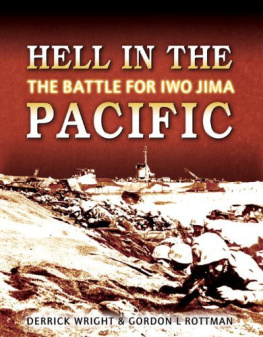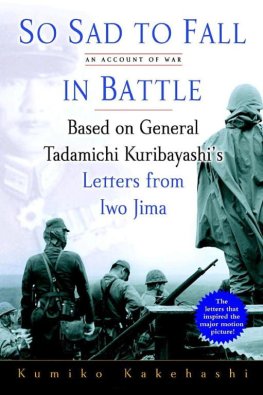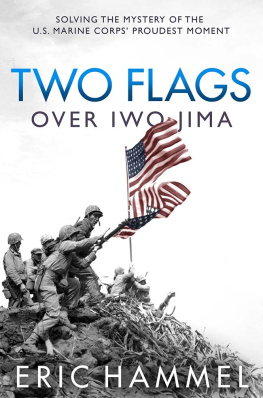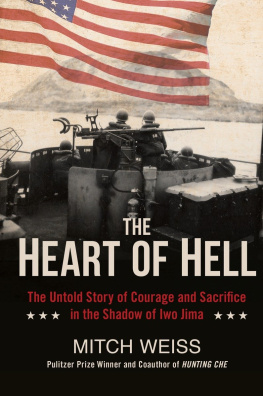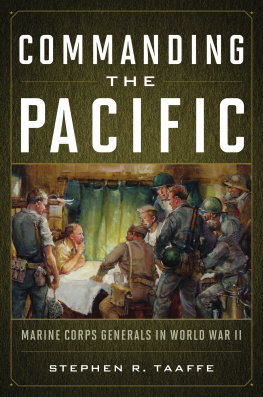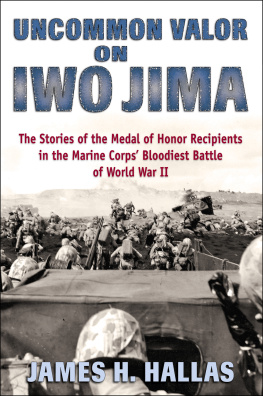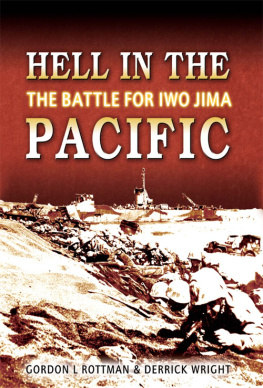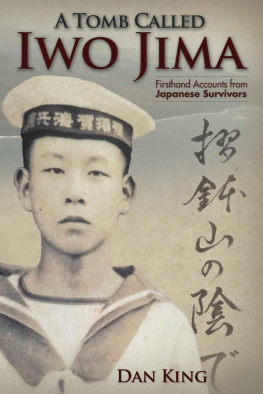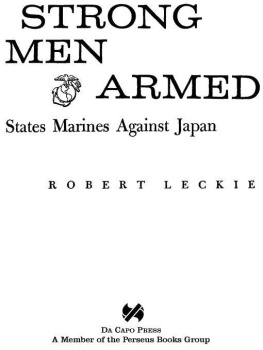GORDON L ROTTMAN & DERRICK WRIGHT
CONTENTS
ORIGINS OF THE CAMPAIGN
As the final days of 1944 ebbed away the Japanese were facing defeat on all fronts. The heady days of conquest that had followed the attack on Pearl Harbor on December 7, 1941, and the occupation of the Philippines, Singapore, Hong Kong, and the oil-rich Dutch East Indies, were little more than a memory as they prepared to defend the homeland at the inner limits of their defensive perimeter.
After suffering staggering defeats at Midway, the Philippine Sea and Leyte Gulf, the Imperial Navy was impotent in the face of the massive US Task Forces that scoured the Pacific and accompanied every amphibious landing. In the west, British and Commonwealth forces of the Fourteenth Army had pushed the enemy back from the borders of India, and in bitter fighting in some of the worst jungle terrain in the world were driving the Japanese Army along the Irrawaddy River into central Burma.
In the Central Pacific, General Douglas MacArthurs army had advanced through the Solomons and across New Guinea and by October 1944 had invaded Leyte in the Philippines, redeeming his pledge that I shall return. Through the islands and atolls to the north, Admiral Chester Nimitzs Marines swept onward in their island hopping campaign that had begun at Tarawa in 1943 and was to climax at Okinawa in 1945. Seizing only those islands that were essential for the support of further operations and bypassing and neutralizing the others, the Marines had by August 1944 occupied the main islands of the Marianas Guam, Saipan, and Tinian.
A view from the forward cockpit of a B29 Superfortress during a bombing raid over Ansham, Manchuria, in late 1943. The B29 had the capability to take the war to the Japanese mainland, hence the capture of Pacific islands such as Iwo Jima was essential if the aircraft were to have viable operating bases. (Time & Life Pictures/Getty Images)
The unique strategic location of Iwo Jima, midway along the B29 Superfortress route from the Marianas to Tokyo, made it imperative that the island should come under American control. Prior to the occupation of Saipan, Tinian, and Guam, the B29s had been limited to carrying out raids on southern Japan from bases in central China. With the problem of transporting all of their fuel by air over thousands of miles of inhospitable country and the limitations of small bomb loads, the attacks had little impact. But now, with the construction of five huge airfields 1,500 miles (2,414km) from the Japanese mainland, the way was open for the 20th Air Force to mount a massive campaign against the industrial heartland of Japan.
Initially the 20th Air Force had attempted to duplicate the technique that had been so successfully used by the 8th Air Force in their bombing campaign against Germany daylight precision bombing. The experiment had failed largely because of unexpectedly high winds as the Superfortresses approached their targets at altitudes of 27,00033,000ft (8,23010,058m) in the jetstream. The 20th Air Force commander, Brigadier-General Haywood Hansell, became increasingly frustrated and blamed his crews for the disappointing results; by January, 1945, the chiefs in Washington had decided that Hansell had to go. His replacement was Curtis LeMay, a brilliant technician who had previously been in command of the 3rd Division of the 8th Air Force in England. LeMay was to introduce a new term to the aircrews of the 20th Air Force area bombing a tactic which was widely used by the RAF throughout the war. He proposed to firebomb the main cities of Japan at low level and by night in a dramatic reversal of Hansells earlier tactics. LeMay was aware that his career was on the line. He had not informed General Henry Hap Arnold, commanding general of the United States Army Air Force (USAAF), of this first low-altitude raid: If we go in low, at night, not in formation, I think well surprise the Japs, at least for a short period. If its a failure and I dont produce any results then he can fire me, he said.

The B29 Superfortress bomber was the most advanced aircraft of its day. With pressurized crew compartments, remote-control gun turrets, and a huge range and bombload, it was able to reach the Japanese mainland with ease. Here, rows of brand new aircraft stand outside the plant specially constructed for the B29 program at Wichita, Kansas. (Boeing Company Archives)
The only obstacle on the flight path was Iwo Jima. It housed two airfields with a third under construction, and a radar station that could give two hours warning of an impending raid. The USAAF desperately needed to eliminate the threat of fighter attacks from the Iwo airfields and to neutralize the radar station there. With the island under American control there would be the added bonuses of a refuge for crippled bombers, facilities for air-sea rescue flying boats, and more importantly, a base from which P51 Mustang long-range fighters could escort the Superfortresses on the second leg of their long haul to Japan.
At Iwo Jima the amphibious techniques that had been developed over the previous three years were to receive the supreme test as three Marine divisions pitted themselves against more than 21,000 deeply entrenched Japanese troops led by a brilliant and determined commander, Lieutenant-General Tadamichi Kuribayashi. Do not plan for my return, he was to inform his wife from Iwo Jima. Sadly his words would also be the epitaph for nearly 6,000 US Marines.
Lieutenant-General Holland Howlin Mad Smith, Commander Fleet Marine Forces Pacific, called the battle: The most savage and most costly battle in the history of the Marine Corps. Smith had fronted every amphibious landing in the Central Pacific from Tarawa in 1943 to the Marianas in late 1944 and was eminently qualified to make such a judgment. As the battle reached its climax, Admiral Nimitz was to add his now famous phrase: Among the Americans who fought on Iwo Jima, uncommon valor was a common virtue.
CHRONOLOGY
| 1941 |
| December 7 | Japanese attack Pearl Harbor. US declares war on Japan. |
| December 8 | Japanese assault Philippines, Hong Kong, Malaya, and Wake Island. |
| December 11 | Germany and Italy declare war on the United States. |
| 1942 |
| February 15 | Singapore falls to General Yamashita. |
| March 12 | General MacArthur leaves Philippines vowing I shall return. |
| May 6 | All US forces in Philippines surrender. |
| May 7 | Battle of the Coral Sea first Japanese setback of the war. |
| June 47 | Battle of Midway Japanese lose four carriers; turning point of the Pacific War. |
| August 7 | US Marines land on Guadalcanal in Solomon Islands. |
| 1943 |
| February 1 | All Japanese troops evacuate Guadalcanal. |

